Sensitivity of contaminant pressures
The MarESA (Marine Evidence-based Sensitivity Assessment) approach adopted the contaminant pressure definitions and benchmarks developed by Tillin et al. (2010). The current benchmarks for the contaminant pressures are set to the existing chemical/pollution standard levels, that is, ‘compliance with all AA EQS, conformance with PELs, EACs, ERLs’ for chemical contaminants. However, because these environmental standards have been set with the intention of avoiding environmental harm nothing is, therefore, ‘sensitive’ to these pressures when ‘compliance with all environmental standards’ is used as a benchmark.
Therefore, the sensitivity assessment of the contaminant pressures and their benchmarks was revisited in liaison with the Statutory Nature Conservation Bodies (SNCBs), Government Agencies (Defra, DAERA, Marine Scotland) and relevant experts to enable their use in identifying sensitive habitats within MPAs or other areas where unregulated events and pollution incidents may occur that exceed the EQS thresholds, for example, an accidental chemical or oil spill, or discharge of excess fertilizer, so that SNCBs can advise on management and site recovery.
The resultant approach to sensitivity assessment, supporting documents, spreadsheets and resultant 'evidence reviews' are summarized below but explained in detail by Tyler-Walters et al. (2022). Please note that the approach is under development and the following documentation is subject to change.
Development of the approach
The approach was developed by a review of the range of chemicals (contaminants) that were likely to be released or spilt into the marine environment, their resultant fate and behaviour, and their potential toxicity with a focus on Persistent, Bioaccumulative and Toxic substances (PBTs) or Hazardous and Noxious Chemicals (HNSs) (see Tyler-Walters et al., 2022). The review also examined the derivation and use of environmental standards in the aquatic environment. The key conclusions and recommendations follow.
- It is difficult to see how a quantified value (e.g. chemical concentration) or scenario (e.g. spill or incident scenario) would function as a quantified benchmark for sensitivity assessment. The mechanisms whereby any individual species is exposed to any individual chemical are complex and vary depending on the behaviour of the chemical in the environment, its mode of action and toxicity, as well as the nature of the receiving environment.
- A ‘weight of evidence' approach was adopted and sensitivity to exposure to any given chemical was assessed based on the reported levels of resultant mortality, as used for pressures such as ‘abrasion’, ‘penetration’ and ‘introduction of non-native species’.
- Sensitivity assessments were supported by a description of the relevant evidence on the method or route of exposure, and evidence from laboratory studies (e.g. LC/EC50s) and observational studies where available, which is current practice.
- The chemical behaviour of the chemical included in our pressures (‘hydrocarbons’, ‘synthetics’, ‘transitional metals’, ‘other’) was recorded or examined to identify those unlikely to impact benthic species (e.g. evaporators), and those likely to have physical (e.g. smothering, clogging) and/or chemical effects (e.g. toxicity).
- Sensitivity to physical and chemical effects was scored separately where needed, e.g. oil spills.
- Furthermore, it was suggested that detailed Rapid Evidence Assessments (REAs) were used to record the details (meta-data) of the evidence used to support sensitivity assessment in a separate dataset.
Scope of the study
The MarESA dataset includes the following ‘Contaminant’ pressures:
- ‘Transition elements & organometals’;
- ‘Hydrocarbon & polyaromatic hydrocarbons (PAHs)’ ;
- ‘Synthetic compounds’; and
- ‘Introduction of other substances’ (solid, liquid or gas).
The contaminant pressure definitions have been revised based on the review and are listed on the MarESA pressures and benchmarks page (see also Tyler-Walters et al., 2022). The review also compiled a list of chemical contaminants as the focus of the literature reviews. The list compiled chemicals identified as PBTs by the EU Water Framework Directive, or OSPAR, and/or as HNSs, or chemicals reported as spilt or discharged by industrial or other activities in the marine environment. The current list (March 2022) of chemicals includes ca 639 separate entries grouped by pressure, contaminant group, type, and chemical name.
The 'Contaminant-Chemical-Groups-March2022' spreadsheet can be downloaded here.
Rapid Evidence Assessment (REA)
A Rapid Evidence Assessment (REA) protocol was developed based on the Defra/NERC Quick Scoping Reviews and Rapid Evidence Assessments guidance (Collins et al., 2015).
The REA process involves the following steps (Collins et al., 2015).
- Develop protocol (including the details of the evidence review question(s) and methodology).
- Search for evidence (using the search strategy and methodology in the protocol).
- Screen the search results using the relevancy (inclusions and exclusion) criteria outlined in the protocol.
- Extract evidence relevant to the evidence review question(s) – and create a ‘map of the evidence’.
- Critically appraise the evidence and its relevance to the ‘review question’.
- Synthesize the results.
- Communicate the results.
The REA Protocol was tested and refined based on evidence reviews of the effects of 'contaminants' on both Mytilus spp. and seagrasses (inc. Zostera spp.). The REA protocol details:
- the 'review question'
- the scope of the study (inclusions and exclusions);
- the literature review and search strategy;
- the contents of the 'evidence summaries' including the standard terms used; and
- the approach to scoring sensitivity.
The current REA Protocol can be downloaded here.
Evidence reviews
The resultant REAs are presented in two formats; 'evidence summaries' and 'evidence reviews'.
The 'evidence summaries' list the 'evidence' extracted from each article examined in the individual evidence review as detailed in the REA Protocol above. For example, chemical group and type, study type (e.g. field or laboratory), experimental design, exposure concentration and duration, effects measured, resultant 'end points' (e.g. NOEC, EC/LC50s, mortality), ranked mortality, and resistance scores, together with a narrative description of each study and its relevant findings. The 'evidence summaries' are provided in Excel (CSV).
The REA 'evidence reviews' are presented in report format (PDF) and detail the evidence used to inform the assessment of each species or group of species to individual types of chemical (e.g. oil spills, organotins, pesticides) and, hence, each pressure. The 'evidence reviews' outline the variation in sensitivity between different types of chemicals, and between different species and/or their life stages as appropriate. The relevant sensitivity assessments are also summarized on the relevant species or biotope reviews.
|
Subject (taxon) |
Evidence summary (ZIP) |
Evidence review (PDF) |
|---|---|---|
|
The blue mussel Mytilus spp. |
||
|
Seagrasses inc. Zostera spp. |
||
|
True oysters - Crassostrea spp, Ostrea spp. and Saccostrea spp. |
||
|
Anthozoa |
||
|
Selected polychaetes |
||
|
Selected molluscs |
||
|
Maerl |
||
|
Selected amphipods |
Interpretation (notes)
- The resistance (and hence sensitivity) assessments are based on the ‘worst-case’ ‘ranked mortality’ for each chemical examined in each article reviewed. That is, if exposure to hydrocarbons was reported to result in ‘severe’ (>75%) mortality, then resistance is assessed as ‘None’. If ‘significant’ mortality was reported, then resistance is assessed as ‘Low’ and so on, using the standard MarESA ‘resistance’ scale.
- Reporting the ‘worst-case’ sensitivity may exaggerate species (and hence habitat) sensitivity without context. This is because acute toxicity may result from exposure to high concentrations of a contaminant in a laboratory that may itself not represent concentrations likely to occur in the environment, although spills may be an exception. However, reporting the ‘worst-case’ scenario probably remains the most ‘transparent’ and ‘non-biased’ approach.
- The resistance (and hence sensitivity) assessments may vary between species and/or contaminants within the taxa, contaminant groups and pressures studied.
Users should examine the detailed evidence presented in the 'evidence summaries' and 'evidence reviews' to interpret the sensitivity assessments for each habitat or species.
References
Collins, A., Coughlin, D., Miller, J. & Kirk, S., 2015. The production of quick scoping reviews and rapid evidence assessments: A how to guide. Defra, London, 63 pp. Available from: https://assets.publishing.service.gov.uk/government/uploads/system/uploads/attachment_data/file/560521/Production_of_quick_scoping_reviews_and_rapid_evidence_assessments.pdf
Tillin, H.M., Hull, S.C. & Tyler-Walters, H., 2010. Development of a sensitivity matrix (pressures-MCZ/MPA features). Report to the Department of the Environment, Food and Rural Affairs from ABPmer, Southampton and the Marine Life Information Network (MarLIN) Plymouth: Marine Biological Association of the UK., Defra Contract no. MB0102 Task 3A, Report no. 22., London, 145 pp. Available from http://randd.defra.gov.uk/Default.aspx?Menu=Menu&Module=More&Location=None&Completed=0&ProjectID=16368
Tyler-Walters, H., Tillin, H.M., d’Avack, E.A.S., Perry, F. & Stamp, T., 2018. Marine Evidence-based Sensitivity Assessment (MarESA) – A Guide. Marine Life Information Network (MarLIN). Marine Biological Association of the United Kingdom, Plymouth, 91 pp. Available from: https://www.marlin.ac.uk/assets/pdf/MarESA-Sensitivity-Assessment-Guidance-Rpt-Dec2018.pdf
Tyler-Walters, H., Williams, E., Mardle, M.J. & Lloyd, K.A., 2022. Sensitivity Assessment of Contaminant Pressures - Approach Development, Application, and Evidence Reviews. MarLIN (Marine Life Information Network), Marine Biological Association of the UK, Plymouth, pp. 192. [View report]
Last edited 2024-06-05


